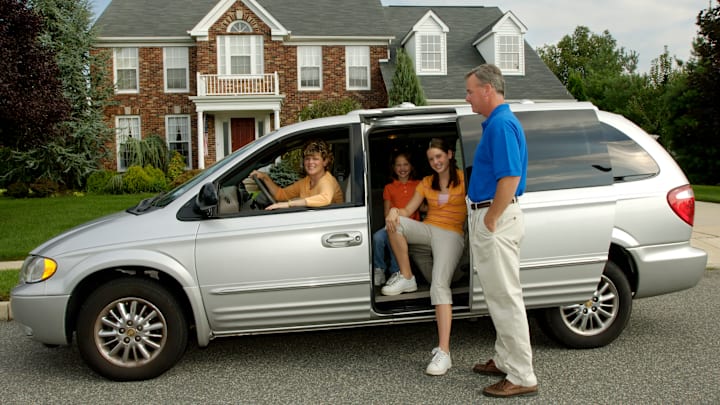If you were born between 1985 and 2005, chances are you spent a solid portion of your childhood squished into the third row of a Dodge Caravan, eating Goldfish crackers off the floor mats. Back then, minivans were everywhere.
But now, they’ve all but vanished. You’ll still spot the occasional minivan out on the road. But they’re a scarce sight in today’s school drop-off lines, replaced instead by the ever-ubiquitous SUV. What happened to this quintessential family vehicle as we knew it?
A Brief History of the Minivan
The minivan got its start in the age of shoulder pads and Satanic panic. Chrysler came up with an idea for a vehicle built around the American suburbanite in the 1980s. It was the minivan, a spacious vehicle complete with sliding doors, cupholders, and enough cargo storage for your kids and their soccer buddies.
By the early 2000s, the minivan had hit its peak, with 1.3 million sold in a single year. But that peak was also the beginning of the end. Because while the minivan was useful, it was never cool: the cars were even rudely dubbed “mom-mobiles” and “loser cruisers.”
The rise of Sport Utility Vehicles (SUVs) in the ‘90s and early 2000s didn’t help the minivan’s popularity. While the SUV was basically just a less practical, more expensive version of its older counterpart, there was a key difference in branding that brought in the consumer crowds. Suddenly, everyone wanted to embody that very SUV feeling of adventure, freedom, and a less stuck-in-the-suburbs version of parenthood.
A Mini Comeback
The minivan’s fall from grace was partially about aesthetics, but it was also about something deeper: the changing American family.
Birth rates in the U.S. have been steadily declining for years, with the CDC reporting a historic low in 2023. Meanwhile, a growing number of young adults aren’t sure they want kids at all. The classic image of two parents shuttling around their horde of kids just doesn’t represent most households anymore. With fewer children to lug around, the demand for a vehicle that could fit a large family has simply declined.

Though the minivan might not dominate the family market anymore, the nail isn’t in the coffin quite yet. Millennials, once loyal city slickers, are slowly settling down into less urban locations. According to a Bank of America survey, around 45 percent of Millennials expect to buy a home in the suburbs. And what do the suburbs demand? A car with storage space that can handle Costco hauls and a whole lot of commuting. Perhaps it isn’t so surprising after all that minivan sales have actually seen an uptick in 2025.
Read More About Cars:
